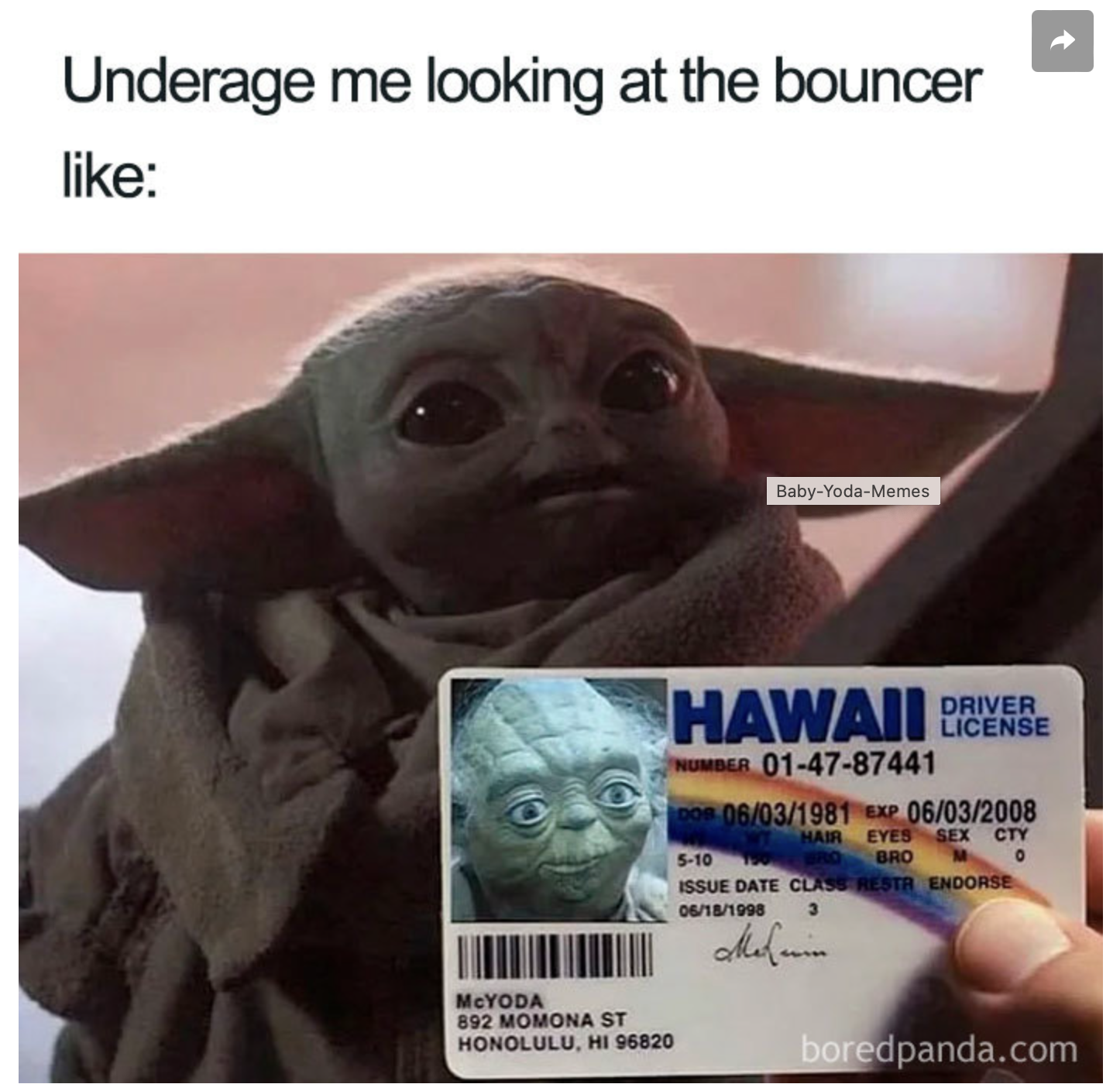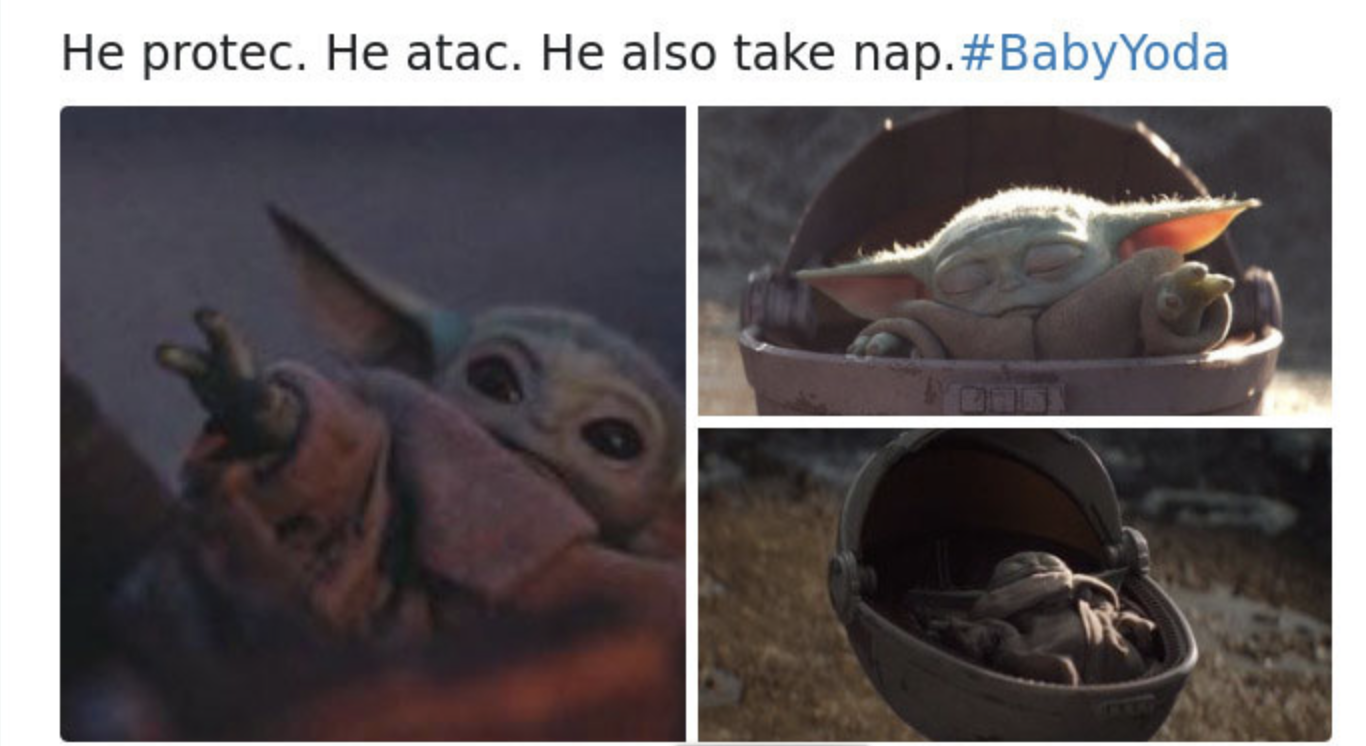

“Everything is turned into an advertisement”. This claim, made by Abigail Reed (2023, p. 151) in reference to corporations utilizing meme culture and its viral aspects to promote their product, begins to explain how the Baby Yoda phenomenon online led to the rapid growth of popularity of The Mandalorian series (Hoke, Smit, 2022). On the internet, a meme is typically an image or video that is modified, often added to relatable captions, shared online, and transformed by other users. They represent a cultural phenomenon or experience online (Miltner, 2018; Reed, 2023). Interestingly, most major public events have seen the apparition of internet memes following them, as the audience amplifies the virality of an event. This idea is often used by advertisers to promote their product, and letting the audience do the marketing for the company. Indeed, as Reed (2023) argues, internet memes enhance the integration of product-placement at minimal cost, create conversations and trends about the product, and does not bother paying-users of ad-free platforms.
In an article posted on the blog BoredPanda.com, only 10 days following the airing of the Mandalorian, was a list of 30 Baby Yoda memes that had already taken “the internet by storm” (Balčiauskas et al., 2019). As portrayed here, Baby Yoda memes happened rapidly, and became “an incentive to consume the show” (Reed, 2023, p. 153), as internet users were encouraged to watch the show to understand and take part in the online conversation. The memes did not contain advertisements but served as advertisements themselves; by dint of their usage, their popularity effectively promoted the character, and consequently the show. It is interesting to note that this form of advertising is very normalized in our digital age, and is often not seen as advertisement by memes users (Reed, 2023).

One particular aspect of certain memes is its relationship to cuteness. McIntyre (2020, p. 1) states that memes often play on the feeling of “affective [...] associated with the cute object”. In the case of Baby Yoda, memes often profit from his ‘babyness’ and cuteness to make it more relatable, by using an infantilizing language or by making his young age relatable (e.g. “underage me when…”;“he protec, he atac…”). His baby condition is being used as a relatable trait, the same way that younger women infantilize themselves to appear younger and cuter. The virality of the Baby Yoda memes is amplified by his relatability as a cute baby because he represents the audience (Hoke, Smit, 2022).